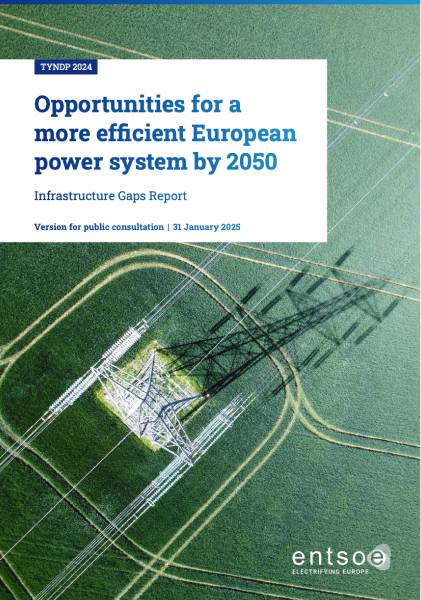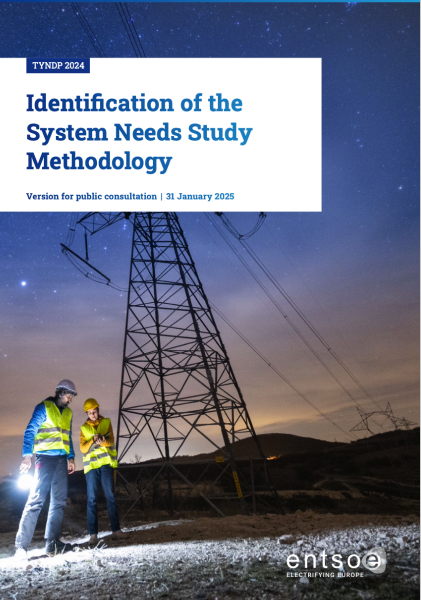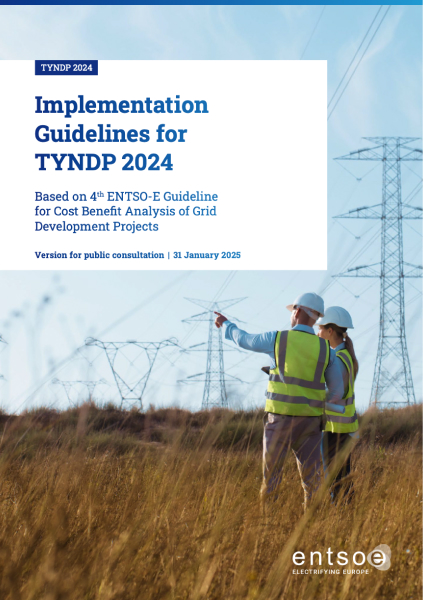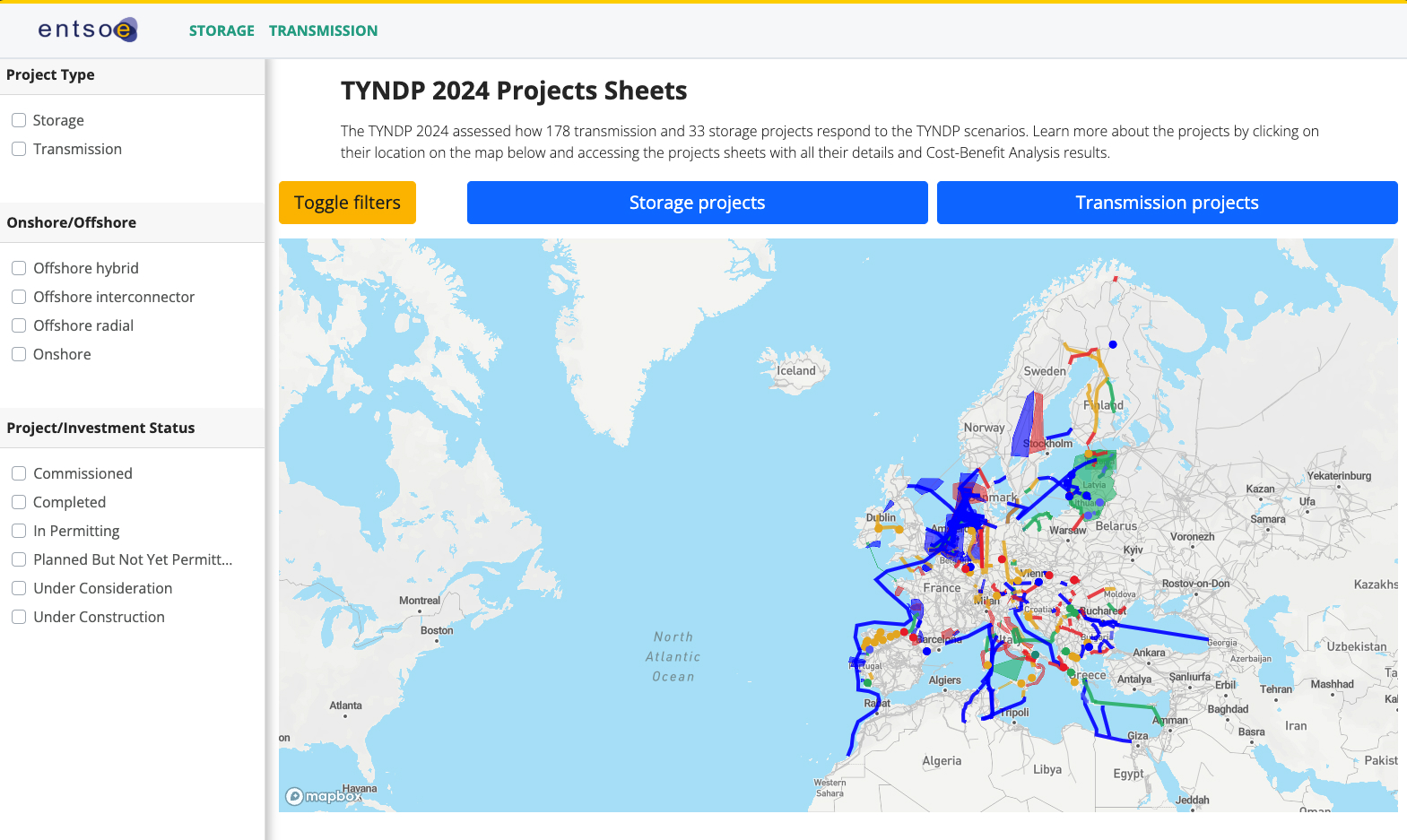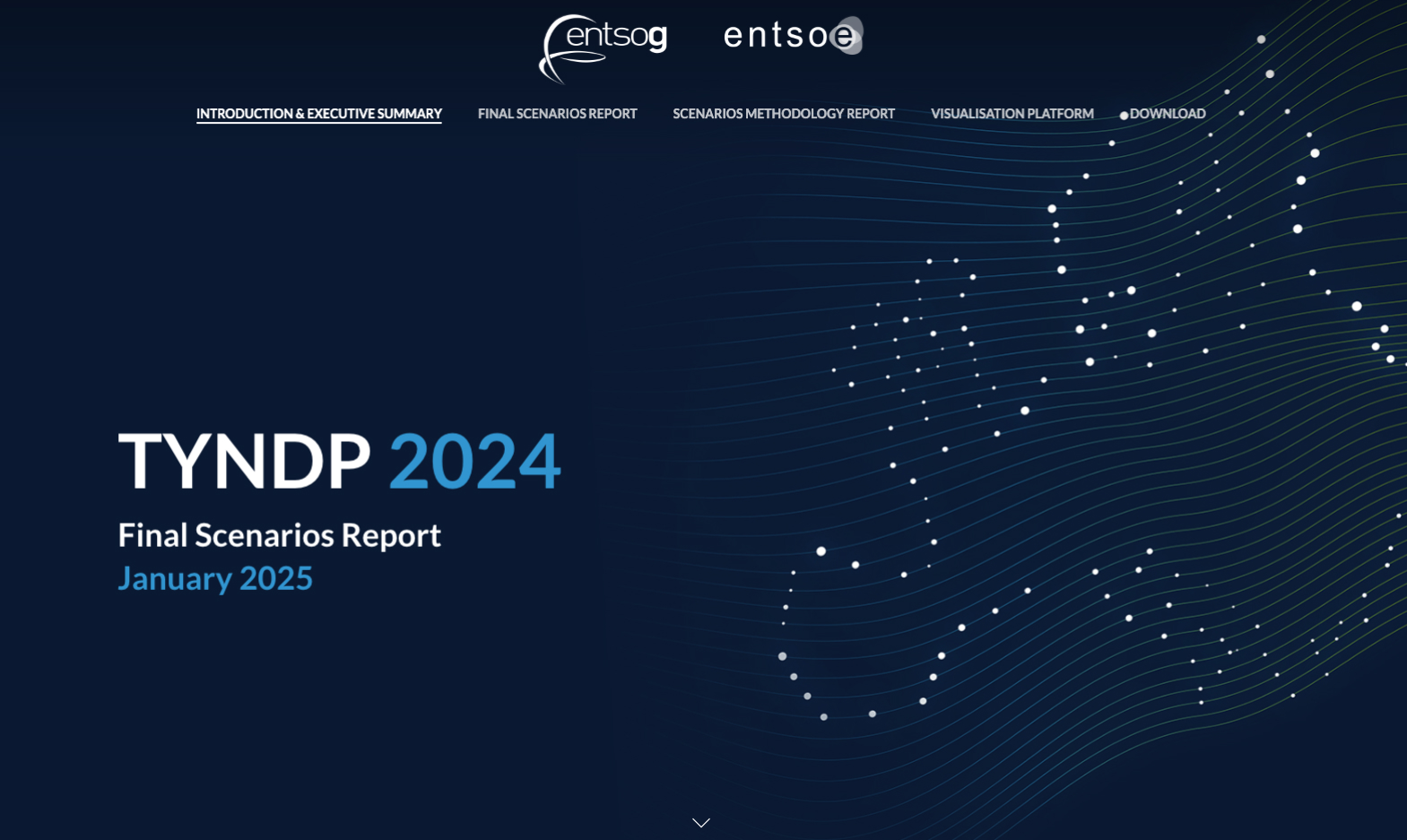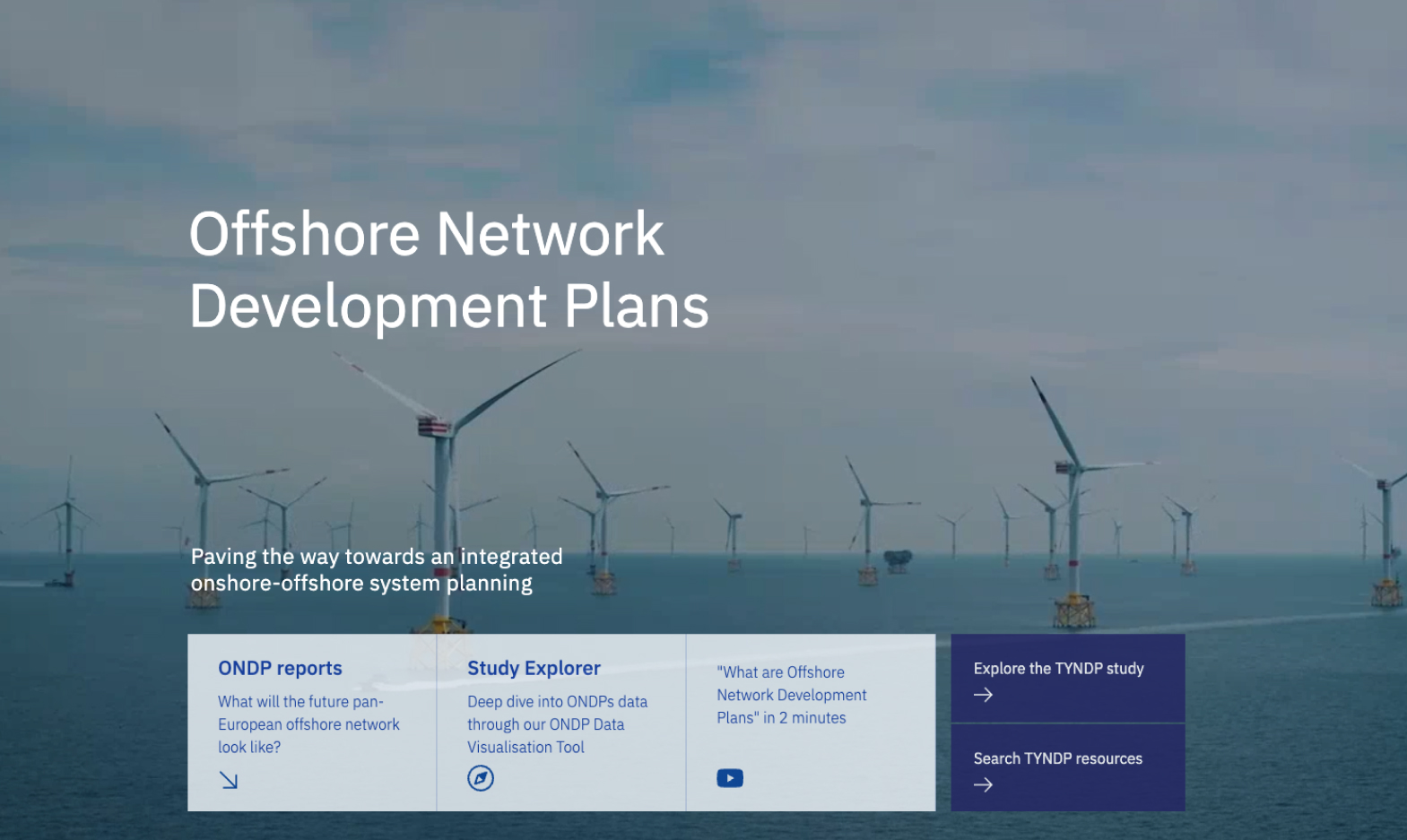TYNDP 2024: Europe's electricity infrastructure plan.
Paving the way towards a more efficient European power system.
Key Findings
Study Explorer: System Needs
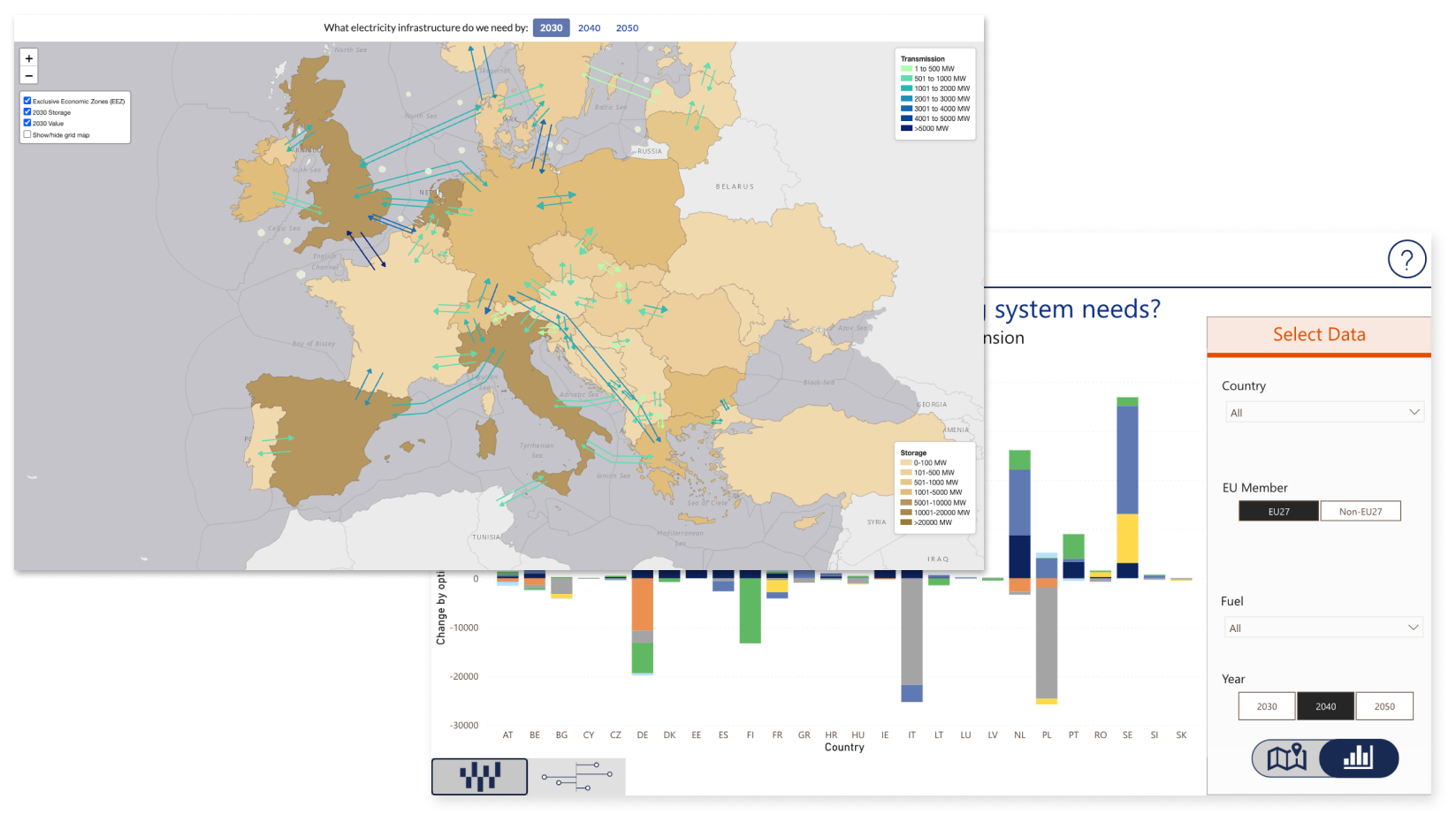 Click to explore
Click to exploreWhat kind of electricity infrastructure is needed?
Study Explorer: Infrastructure Projects
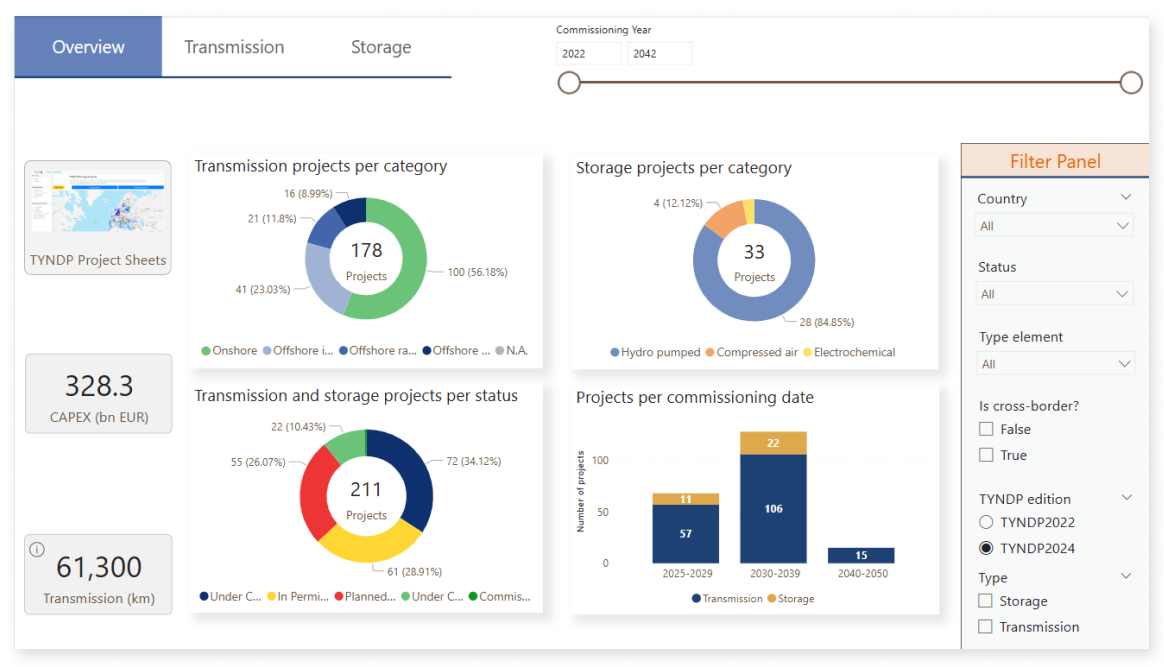 Click to explore
Click to exploreDownload TYNDP 2024 Reports and Data
TYNDP 2024 - FAQ
Why does Europe need a plan for electricity infrastructure?
Europe has embarked on an unprecedented societal transformation journey with its Green Deal objective to reach carbon neutrality by 2050. The European Climate law sets an ambitious path towards decarbonisation with an intermediate target of reducing net greenhouse gas emissions by at least 55 % by 2030, compared to 1990 levels. The Fit for 55 Package and REPowerEU Plan will fast-forward the energy transition to carbon neutrality at a much greater scale with the increase of renewable energy and energy efficiency targets for 2030. The rapid replacement of fossil-fuel generation by renewable energy sources (RES) including the replacement of the Russian gas supply after February 2022, the greater electrification of other sectors, increasing energy efficiency, the increasing development of new technologies (storages systems, electrical vehicles, …) and interlinking the various energy sectors (Hydrogen technology, P2X, …) will be key.
Europe will only reach its decarbonisation objective and the successful deployment and integration of increasing volumes of variable renewables if:
- the costs of transforming the system are kept lower than the benefits from doing so, by an appropriate set of investments enabling better market integration and leading to competitive power prices, and
- the continuous secure access to electricity is guaranteed to all Europeans.
Achieving this requires a coordinated, pan-European approach to electricity system planning, connecting borders, sectors and regions and including new technologies. The TYNDP is essential to the timely and effective development of transmission infrastructure to realise the long-term European policy goals and aspirations while keeping the electricity transmission system secure and efficient. This is also recognised in the EU Grid Action Plan of November 2023, which aims to help Europe deliver the European Green Deal with measures focused on accelerating the roll-out of the electricity grid. Investments in electricity infrastructure is also a pillar for EU competitiveness and decarbonisation, according to the Draghi report of September 2024.How is the TYNDP developed?
The development of the TYNDP follows the following three steps, spread over approximately 3 years and partially overlapping:
STEP 1 – Developing scenarios: At the heart of the TYNDP lays the elaboration and definition of scenarios indicating how the European power system might look in the future. ENTSO-E and its gas counterpart ENTSO-G have developed scenarios looking as far as 2050 together with engagement of a wide range of stakeholders. Each scenario’s impacts on energy markets and networks are analysed with the help of tailored modelling tools. Thanks to the models, ENTSO-E can explore various energy market needs and the corresponding power grid configurations. In this way, we can understand where, from an economic viewpoint, the network infrastructure is working well, and where it needs to be reinforced and further developed. The main role of the TYNDP is therefore to identify where future investments in the electricity system can help to reach the EU climate and energy goals. This process is organized in the next two steps.
STEP 2 – Identifying system needs: Investigating where increasing cross-border electricity exchange or storage would bring economic benefits in the future energy scenarios and identifying infrastructure gaps. This step also includes the identification of offshore corridors to meet EU Member States targets of offshore RES development. The two main deliverables of this step are the Infrastructure Gaps Report and the Offshore Network Development Plans per sea basin3.
STEP 3 – Assessing projects: Performing an individual assessment of the performance of every project considered in the TYNDP 2024 under the different scenarios. TYNDP 2024 assessed 178 transmission projects and 33 storage projects. The outcome of this step is presented in an online platform which includes interactive data visualisation and Project Sheets summing up the key information and CBA results of each project assessed4.
The identification of system needs and the cost-benefit analysis of projects complete each other to help policymakers identify the most relevant projects at a given time. The System Needs study considers the European electrical system in its entirety, from a global point of view, while the cost-benefit analysis of projects evaluates each project individually by assessing its specific impact on the overall system.
How are stakeholders involved in the TYNDP?
Stakeholders get involved in the TYNDP from the start of the process until its finalisation, via public consultations, stakeholder events and, for scenarios, via the scenarios Stakeholder Reference Group. The development of TYNDP 2024 included 6 public consultations and 12 workshops or webinars.
Aside from the TYNDP 2024 process, stakeholders have been heavily involved throughout 2022 and 2023 in the development of the Cost-Benefit Analysis methodology (CBA 4.0) applied to perform the CBA of projects. The feedback received so far from stakeholders played an important role in ensuring the draft TYNDP 2024 released for consultation meets stakeholders expectations. The entire TYNDP 2024 package is submitted to public consultation from 31 January to 14 March 2025. Stakeholder webinars and/or workshops will be organised to explain in more details the various parts of the package and gather further stakeholder feedback. Stakeholders wishing to engage further with ENTSO-E are welcome to contact us at tyndp@entsoe.eu.
What are system needs and infrastructure gaps?
System, also referred to as system opportunities, show where new solutions are needed to contribute to reaching European decarbonisation targets in an economically-efficient way. This study focuses on needs beyond the next anticipated wave of cross-border grid investments of 35 GW by 2030 corresponding to projects currently under construction or in advanced stages, additional to the 126 GW available in 2025. They use the National Trend scenarios for 2030 and 2040, and the Distributed Energy scenario for 2050, which means that power system needs exist in a world where significant uptake of renewable energy sources and system flexibility already happened.
Infrastructure gaps refer to needs that are not currently addressed by an infrastructure project or by another solution. To give an idea of the gaps, we compare the identified needs in 2040 with the transmission infrastructure projects included in the TYNDP 2024 project portfolio. The comparison shows that existing projects address only part of the needs. In 2040, our study finds 108 GW of opportunities for cross-border capacity increase after 2030. By comparison, transmission projects with cross-border impact after 2030 and under development today amount to 80 GW of cross-border capacity increase (Figure 5.3). Therefore, there is a gap of 28 GW of cross-border transmission capacity. Of course needs may be addressed by a variety of solutions beyond transmission lines, but this comparison already gives an idea of the localisation and size of opportunities for investment in additional infrastructure.
Where are there opportunities for improving Europe’s power system?
Opportunities exist all over Europe. In 2030, the study finds that 88 additional GW of additional cross-border capacity and 56 GW of storage would be economically efficient. In 2040, we find space for 108 GW of cross-border capacity increase after 2030.
TYNDP 2024 introduces for the first time an analysis of system needs for 2050, emphasizing the importance of investing in grid and storage infrastructure to achieve a CO2-neutral energy system. An additional 224 GW of cross-border grid capacity (additional to 2030) and 540 GW of storage power capacity are economically-efficient by 2050.
In all time horizons needs appear on most European borders. The highest needs for cross-border capacity increases are on Swedish borders with Finland and Norway, on UK borders with the continent and to integrate the Iberian Peninsula. For storage, highest capacities in 2050 are located in Germany, Italy and the Netherlands.
How does the Infrastructure Gaps Report relate to the Offshore Network Development Plans?
The Offshore Network Development Plans (ONDP) released as part of TYNDP 2024 in January 2024 deliver information on the infrastructure needed to connect offshore renewable generation and the potential additional expansion of the hybrid transmission infrastructure between aggregated offshore generation nodes. The TYNDP 2024 system needs study complements the findings of the ONDP. By optimising the whole electricity grid, including the onshore cross-border network, offshore interconnections and the offshore hybrid corridors identified by the ONDP, the system needs study identifies where hybrid offshore infrastructure, which serves a dual purpose of connecting RES generation and interconnecting two countries, is part of the overall most economically efficient solution for Europe. Results largely confirm the findings of the ONDP, which found 25 GW of cross-border capacity increase between 2025 and 2040 via offshore hybrid projects. The system needs study results identify offshore hybrid needs in the North Sea, between Norway, Denmark-West, Germany, the Netherlands, the UK and Belgium. Another hybrid offshore corridor is identified between Ireland, the UK and France, and in the Baltic Sea between Germany and Sweden.
What are solutions to address system needs?
The System Needs study does not identify solutions. The methodology only provides an indication of where, for example, market integration could be improved, but it cannot prioritise between possible solutions to address identified needs. Different valuable solutions, or a combination of solutions, may exist to tackle any identified need. ENTSO-E expects that addressing tomorrow’s challenges will require the parallel development of diverse solutions, including with infrastructure (new or upgraded transmission infrastructure, electricity storage, power to gas or hybrid infrastructure) and non-infrastructure solutions such as dynamic line rating. Solutions to the needs will be proposed by project promoters. ENTSO-E invites promoters to propose projects for the TYNDP 2026 project portfolio in the spring of 2025, to address some of the needs identified in TYNDP 2024.
How does the TYNDP consider energy efficiency?
The TYNDP 2024 system needs study in 2030 and 2040 is based on the National Trends scenario, which is rooted in EU Member States’ National Energy and Climate Plans (NECPs). When developing these plans, EU Member States were required to meet the EU’s objectives for 2030, including the energy efficiency target of reducing energy consumption by at least 32,5 % (compared to projections of the expected energy use in 2030). Our National Trends 2040 scenario builds on the 2030 objectives. Although there are not yet EU target for energy efficiency in 2040, the needs for capacity increase identified in the study exist in a world where significant energy efficiency gains have already been achieved.
Measures to increase energy efficiency should of course be the first step to address system needs, with the objective to decrease system needs by reducing energy demand. Besides energy efficiency targets to reduce demand for electricity, an additional way to partly satisfy system needs, without building new infrastructure, is to increase grid capacity by improving the performance of existing system assets. Electricity TSOs already today apply various solutions to optimise and expand the present capacity of the grid, including both new infrastructure solutions (for example hybrid offshore infrastructure combining generation and interconnection) but also non-infrastructure solutions such as software, new design ideas upgrading the current assets, operational measures to enhance the utilisation of transmission capacities and new technologies to help address grid constraints. Non-infrastructure based solutions are already included in several projects in the TYNDP portfolio and their main advantage is that they are relatively fast to implement. However, not all infrastructure solutions are equally lengthy in terms of development time. Some assets, such as phase shifting transformers (PSTs), can be deployed faster and help optimize the performance of the lines being served. PSTs do not increase the capacity of the lines themselves, but if some lines are overloaded while capacity is still available on other lines parallel to them, optimising the power flows with PSTs can increase the overall grid capacity.
However, the increase in electrification level that is necessary for the decarbonisation of the energy system cannot be achieved by simply optimizing current infrastructure. In a European power system transitioning towards high RES and aiming at carbon neutrality in 2050, reducing needs for additional transmission infrastructure is not enough. It is necessary to support the transition by preparing Europe’s grid for a future with higher flows of RES electricity across borders and across regions.
Will TSOs plan the future grid based on identified system opportunities and gaps?
The System needs study is not a network development plan, though assessing system needs is a critical component of any network development plan. The study investigates one particular dimension of the future, which is where increases in cross-border network capacity and storage would be economically justified from a pan-European perspective. To plan future network development, TSOs consider a multitude of additional aspects not considered in the System needs study, including other benefits of projects (for instance in terms of frequency stability) and their environmental and technical feasibility. TSOs also consider other scenarios of evolution of the energy system. TSOs will use the study’s findings as an additional input to develop future National Development Plans, in complement to national and regional planning studies.
Are existing projects fit for purpose to address future power system needs?
Many projects able to solve system needs by 2030 and 2040 are already on the table and are assessed in TYNDP 2024. Of course needs may be addressed by a variety of solutions beyond transmission lines, including cross-sector solutions, but this comparison already gives an idea of the localisation and size of potential gaps. Comparing needs with ongoing projects reveals a 28 GW potential gap in infrastructure development in 2040.
In some cases, infrastructure gaps reflect financing and permitting limits that TSOs face when elaborating their project portfolios, and very often also the need for parallel development of internal grids. Infrastructure solutions will therefore need political support, including through the European Projects of Common/Mutual Interest process. Non-infrastructure solutions and additional improvements in energy efficiency also require time to deliver results. Reaching Europe’s climate objectives will require exploring all possible solutions to bridge the gap.
 ENTSO-E
ENTSO-E